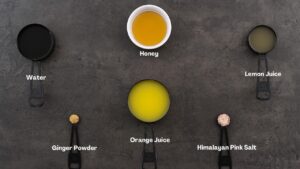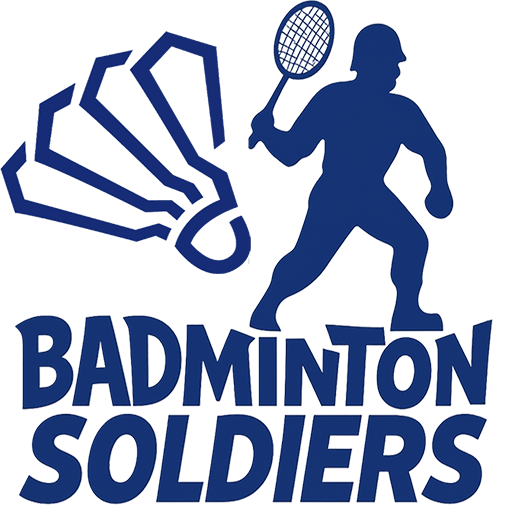Ways to Improve Stamina for Badminton:
- Incorporate joint-friendly exercises into your training routine, such as swimming, biking, and circuit training. These activities can help build stamina without putting too much stress on your joints.
- Vary your workout routine to challenge different muscle groups and avoid boredom.
A workout routine for badminton should focus on building cardiovascular endurance, strength, and flexibility. A sample routine could include:- Cardiovascular endurance: 30 minutes of steady-state cardio (such as running or cycling) 3-5 times a week.
- Strength training: 2-3 days a week, focusing on exercises for the legs, core, and upper body. Examples include squats, lunges, deadlifts, and pull-ups.
- Flexibility: Incorporating stretching into your routine, both before and after your workout, will help to improve your range of motion and prevent injuries.
- Agility Training: Incorporating agility drills such as ladder drills, shuttle runs, and cone drills to improve footwork and coordination.
- Skills practice: Practice your badminton skills regularly, focusing on your footwork, shot technique, and strategic play.
- Recovery: allow time for recovery and rest, which includes adequate sleep and hydration.
- Incorporate interval training, which alternates short bursts of intense activity with periods of recovery, to improve cardiovascular fitness and endurance.
- Incorporate plyometric exercises, such as jumping and bounding, to improve power and explosiveness on the court.
Plyometric exercises, such as jumping and bounding, can be a great addition to a badminton workout routine as they help to improve power and explosiveness on the court. Plyometrics are exercises that involve rapid muscle contractions, which can help to increase muscle strength and speed.Some examples of plyometric exercises that can be incorporated into a badminton workout routine include:
- Box jumps: Jumping onto a box or platform and landing with both feet at the same time.
- Plyometric push-ups: Push-ups done at a fast pace, with an explosive upward movement.
- Jumping lunges: Alternating lunges with a jump in between each rep.
- Skipping: skipping rope or skipping on the spot
- High knee running: running on the spot lifting your knee as high as possible
- Depth jumps: Jumping down from a height and landing on both feet before immediately jumping again.
It is recommended to start with lower-impact plyometric exercises, such as skipping and high knee running and progress to more advanced exercises such as depth jumps. Plyometric exercises should be done 2-3 times a week, with at least 24 hours of rest in between to avoid overuse injuries.
- Stick to a regular training schedule and gradually increase the intensity and duration of your workouts over time.
- Allow for rest and recovery time to allow your muscles to repair and adapt to the training.
Rest and recovery time is an essential part of any workout routine, including badminton training. Adequate rest and recovery allows your muscles to repair and adapt to the training, which can lead to improved performance and a reduced risk of injury.There are a few ways to ensure that you are getting enough rest and recovery time:
- Adequate Sleep: Getting 7-9 hours of sleep per night is essential for muscle recovery and overall health.
- Active recovery: Do low-impact activities such as yoga, swimming or cycling to promote blood flow and reduce muscle soreness.
- Massage: A therapeutic massage can help to reduce muscle soreness and increase flexibility.
- Hydration: Drinking enough water is essential for muscle recovery as it helps to remove waste products from the body.
- Nutrition: Consuming enough protein and carbohydrates is important for muscle repair and recovery.
- Rest days: It’s important to schedule in rest days during your training routine. This will give your body the time it needs to recover and adapt to the training.
- Maintain a healthy diet that provides the right balance of nutrients to build stamina.
Maintaining a healthy diet is crucial for building stamina, especially for athletes like badminton players. A healthy diet provides the right balance of nutrients that are essential for energy production, muscle repair and recovery, and overall health.Here are a few key principles for maintaining a healthy diet for badminton players:
- Adequate energy intake: Consuming enough calories to support your training and performance needs. A balanced diet that includes carbohydrates, proteins, and healthy fats should provide adequate energy.
- Adequate protein intake: Protein is essential for muscle repair and recovery. Good sources of protein include lean meats, fish, eggs, and dairy products.
- Adequate carbohydrate intake: Carbohydrates are the main source of fuel for the body. Good sources of carbohydrates include fruits, vegetables, whole grains, and legumes.
- Adequate hydration: Drinking enough water is essential for maintaining proper body function, especially during intense training or competition.
- Adequate micronutrients: Eating a variety of fruits and vegetables will provide enough vitamins and minerals that are essential for overall health and performance.
- Timing: Eating the right balance of nutrients at the right time is also important for badminton players. Eating a carbohydrate-rich meal 2-3 hours before a match or training session will help to maintain energy levels during the activity. Consuming a protein-rich meal or snack after training or match will help repair and recover muscle tissue.
- Find activities that are fun to you and enjoy the process of building stamina.
- Stay hydrated by drinking enough water and electrolyte-rich fluids before, during, and after exercise to help maintain energy levels.
This Homemade Electrolyte Drink is a healthy and refreshing way to replenish lost fluids. It is made with natural ingredients and is typically consumed before and after a workout, during diarrhea, cold, or flu.
Ingredients:
- Fresh orange juice
- Fresh lemon juice
- Honey or maple syrup
- Ginger powder
- Water
- Himalayan salt or Celtic sea salt

Instructions:
- Mix all the ingredients together in a pitcher or bottle
- Adjust the sweetness and saltiness to your preference
- Serve chilled and enjoy!
Benefits:
- Electrolytes are essential minerals that conduct natural positive or negative charges when dissolved in water, and they help regulate chemical reactions and maintain body fluids.
- Making your own Homemade Electrolyte Drink ensures that you know what ingredients are being added, as store-bought electrolyte drinks often contain artificial flavors, excess sugar, and dyes.
- The natural ingredients in this recipe are loaded with added vitamins and minerals that are needed for overall body health.
Note: You can also adjust the quantity of each ingredient to your preference and taste.

